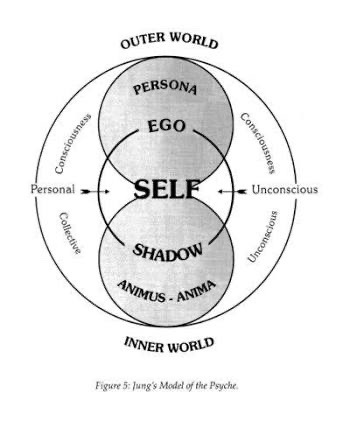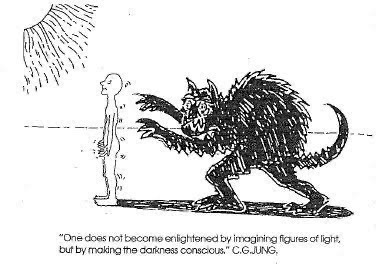Spellbound-savvie - Witch Mom






More Posts from Spellbound-savvie and Others

Myths, Creatures, and Folklore
Want to create a religion for your fictional world? Here are some references and resources!
General:
General Folklore
Various Folktales
Heroes
Weather Folklore
Trees in Mythology
Animals in Mythology
Birds in Mythology
Flowers in Mythology
Fruit in Mythology
Plants in Mythology
Folktales from Around the World
Africa:
Egyptian Mythology
African Mythology
More African Mythology
Egyptian Gods and Goddesses
The Gods of Africa
Even More African Mythology
West African Mythology
All About African Mythology
African Mythical Creatures
Gods and Goddesses
The Americas:
Aztec Mythology
Haitian Mythology
Inca Mythology
Maya Mythology
Native American Mythology
More Inca Mythology
More Native American Mythology
South American Mythical Creatures
North American Mythical Creatures
Aztec Gods and Goddesses
Asia:
Chinese Mythology
Hindu Mythology
Japanese Mythology
Korean Mythology
More Japanese Mythology
Chinese and Japanese Mythical Creatures
Indian Mythical Creatures
Chinese Gods and Goddesses
Hindu Gods and Goddesses
Korean Gods and Goddesses
Europe:
Basque Mythology
Celtic Mythology
Etruscan Mythology
Greek Mythology
Latvian Mythology
Norse Mythology
Roman Mythology
Arthurian Legends
Bestiary
Celtic Gods and Goddesses
Gods and Goddesses of the Celtic Lands
Finnish Mythology
Celtic Mythical Creatures
Gods and Goddesses
Middle East:
Islamic Mythology
Judaic Mythology
Mesopotamian Mythology
Persian Mythology
Middle Eastern Mythical Creatures
Oceania:
Aboriginal Mythology
Polynesian Mythology
More Polynesian Mythology
Mythology of the Polynesian Islands
Melanesian Mythology
Massive Polynesian Mythology Post
Maori Mythical Creatures
Hawaiian Gods and Goddesses
Hawaiian Goddesses
Gods and Goddesses
Creating a Fantasy Religion:
Creating Part 1
Creating Part 2
Creating Part 3
Creating Part 4
Fantasy Religion Design Guide
Using Religion in Fantasy
Religion in Fantasy
Creating Fantasy Worlds
Beliefs in Fantasy
Some superstitions:
Read More
I need more witchy blogs to follow!!
Please reblog if you post about
•hellenic witchcraft
•pro curses/hexes
•candle magick
•herb magick/correspondences
•equality in the witch community
•spell jars
Well, we stopped at a big used bookstore that weve never been to and found this baby. Only 5$ too which was great.
Gotta get a protective jacket on it before using. They had a copy with a jacket but it was 20$...


Simple Moon Cycle Spread
Best performed on a New Moon or Full Moon, or any time you are checking in with yourself and your practice. All answers are designed to be relevent within the span of one moon cycle. 1. Full Moon- What Gives You Power? What fills your cup, gives you energy, and keeps you moving forward? What do we want to make sure we keep around and nurture? Where can we draw strength from during this time?
2. Waning Moon- What Needs Letting Go? What are we carrying that no longer serves us? What can we release to make room for new things? What are we transitioning out of?
3. New Moon- What Is Ready To Begin? Every moment is a new beginning for something. What is waiting to break the surface? What needs a fresh start? What have you been putting off that you are now ready for? What new energy is coming into your life?
4. Waxing Moon- What Can You Develop? What can you best manifest during this time? What needs your attention in order to grow? What things are headed your way, but need a little help reaching their full potential?





In Irish mythology, Brigid is the daughter of the Dagda and had two sisters also named Brigid and is part of the Tuatha de Danann, the supernatural Irish race. The three sisters made up the triple aspect of the one goddess: Brigid of the hearth, Brigid of the forge and Brigid of Inspiration. She is a goddess of spring, fertility, family, the hearth, childbirth, fire, blacksmiths, scholars, physicians, prophets, healing, poetry, occult knowledge, and justice. She was said to be born at sunrise and is often depicted with solar rays coming out of her head, making her one of the Irish solar deities alongside Lugh. It is said that wherever she walks four leaf clovers and flowers will grow. She also created the tradition of “keening” when her son Ruadan died in battle, a song-like wail used by women at funerals. In some cases she is also the goddess of sacred wells, springs and healing waters.
History
Her name comes in different spellings like Brig, Brighid, Brigit, or Brigid but it means “Exalted one” or “Fiery arrows”. She is a goddess of Pre-christian Ireland but versions of her are found all over Europe; she has ties to Brigantia, a warrior goddess of the Brigantes tribe of Britain. She was a beloved goddess of the Celts and has survived through centuries including the Christianization of Ireland and the rest of Europe where most traces of Druidism and Paganism were forgotten. The people of Ireland loved her so much and refused to let her be demonized by the church -like the rest of the gods- that they converted her into a saint known as St. Brigid of Kildare. There are also three rivers named after her one in Ireland, Wales and England: Brigit, Braint and Brent.The river that runs through Wales is known to have healing properties.
Imbolc
Also known as Brigid’s day, Candlemas or St. Brigid’s feast, Imbolc is one of the four fire festivals in Celtic paganism and celebrates the return of spring. Since Brigid is the goddess of spring and was said to go away during the winter, people would light a candle in honor of her return. Offerings of milk, bread, and corn cakes were set out and a seat at the dinner table was left open for her presence. Cows and sheep were seen as sacred to the goddess because they would provide milk for the town during the cold months and they would give birth around Imbolc. This festival celebrated the Maiden aspect of Brigid and young women would carry corn dollies dressed in white which represented the goddess. The women would also dress in white and attend a special feast for Imbolc where young suitors could mingle with the ladies. Imbolc is a time of fertility, cleansing and the light returning after a long winter.
Correspondences
Elements- Water & Fire
Animals- snakes, ewes, cows, bees, oxen, owls and hibernating animals. Vultures
Plants- blackberry, hawthorn, basil, mugwort, apple, heather, dandelion, snowdrop, willow, oak, shamrock, crocus, trillium, corn, lavender and sage. Personal one is cinnamon and chamomile.
Crystals- amethyst, bloodstone, carnelian, garnet, moonstone, clear quartz, and peridot.
Symbols- Brigid’s cross, candles, triquetra, faeries, four leaf clover, cauldron, chalice, corn dolly, anvil or hammer, poetry, forges, hearths, wells, rock formations.
Colours- green, red, white, gold and blue
Devotional Acts
offer her blackberries, baked goods, milk and honey or beer
dedicate a piece of your art to her like painting, knitting, singing, etc.
meditate with fire
savour the warmth of the sun or fire
incorporate the elements of water and fire into your craft
write her a poem
watch the sun rise
say hi to cows and sheep :)
hang a Brigid’s cross above your doorway for protection and blessings
study healing magick, reiki, herbalism and faeries
wear the colours of fire or white
plant a bee garden

Shadow work 🤍
@thewitchoftheforest on instagram
@thewitchoftheforest






Shadow Work
Origins, Meaning and Utility
The Structure of the Mind

Carl Jung theorized the existence of three levels/spheres in the human psyche: the Ego, representing the conscious mind, the Personal Unconscious where memories are contained and the Collective Unconscious, where all knowledge and experiences of the species are shared.
Each Sphere has in it a certain number of Archetypes, used to better describe the components of those structures, and the Shadow is one of them.
What is the Shadow

The shadow can be seen as a instinctual or primitive part of ourselves, it exists as part of the unconscious mind and is composed of repressed ideas, weaknesses, desires, instincts, and shortcomings.
It is this archetype that contains all of the things that are unacceptable not only to society, but also to one's own personal morals and values, normally going against social norms and rules as well as what we personally consider right.
The Shadow is often described as the darker side of the psyche, representing wildness, chaos, and the unknown, and it is common for people to deny this element of their own psyche and instead project it on to others.
The Shadow in Witchcraft and Benefits of Shadow Work

Art: Unknown
The Shadow, in witchcraft, can represent The Unknown, hidden depth of ourselves. Speaking in terms of energy, this is an area that can be a deep source of energetic issues, because it’s locked up in the dark and always striving to reach the light.
To not work with one’s Shadow is to make it greedy and aggressive, as well as denying a big part of oneself, making everything a half of a whole.
Through that brief explanation, we can already establish the importance and role of the Shadow in witchcraft, and with that in mind, comes the concept of Shadow Work.
Shadow Work can be seen in a number of practices, meditation, trances, inner journey’s, lucid dreaming, astral travels, spells and divination.
The method can change, but the principle is simple: Centering your intent to self discovery, self knowledge and self acceptance.
Working with one’s Shadow is not only beneficial to one’s craft, as it allows one to get in touch with their intuition as well as allows for easier connection with one’s guide/guides, but it also allows for healing and acceptance of one’s feelings and needs.
Think of all aspects of life as a wheel. If there is one part bent, the wheel can turn, but with more effort. If the owner spends time fixing that bent part, the wheel will turn in a much more smooth manner.
That is what happens when you take the time to do Shadow Work, you have to put in effort, and most of the time it’s not easy, but once done, all other components on the wheel of your life will be relieved to move on without that obstacle that makes their job harder.
The Shadow is not evil, as evil is just a moral compass invented by humans. It is a part of one’s nature, and to deny it is to supress a connection with yourself.
Take the time to know and accept your shadow, and you’ll see that life will be a little easier.
References:
A Natureza da psique (Structure & Dynamics of the Psyche) by C.G. Jung
The Archetypes and the Collective Unconscious by C.G. Jung


Sheep Lake to Sourdough Gap, July 2021
-
 daddyjonny2000 liked this · 6 months ago
daddyjonny2000 liked this · 6 months ago -
 delicateghostnickelfreak liked this · 1 year ago
delicateghostnickelfreak liked this · 1 year ago -
 thefreakinggeneral liked this · 2 years ago
thefreakinggeneral liked this · 2 years ago -
 honeyshome reblogged this · 2 years ago
honeyshome reblogged this · 2 years ago -
 kavehtruther21 liked this · 2 years ago
kavehtruther21 liked this · 2 years ago -
 tolovechristmore liked this · 2 years ago
tolovechristmore liked this · 2 years ago -
 monesperance reblogged this · 2 years ago
monesperance reblogged this · 2 years ago -
 sweetboiledcandy reblogged this · 2 years ago
sweetboiledcandy reblogged this · 2 years ago -
 aspireandinspire liked this · 2 years ago
aspireandinspire liked this · 2 years ago -
 bulutlarmiisalii liked this · 2 years ago
bulutlarmiisalii liked this · 2 years ago -
 araftakinsan liked this · 2 years ago
araftakinsan liked this · 2 years ago -
 mus-sa liked this · 2 years ago
mus-sa liked this · 2 years ago -
 kediseksuelim liked this · 2 years ago
kediseksuelim liked this · 2 years ago -
 vallakusurabakmanne liked this · 2 years ago
vallakusurabakmanne liked this · 2 years ago -
 littlespringsongbird reblogged this · 2 years ago
littlespringsongbird reblogged this · 2 years ago -
 eternal-echoes liked this · 2 years ago
eternal-echoes liked this · 2 years ago -
 huntrad-professor liked this · 2 years ago
huntrad-professor liked this · 2 years ago -
 kristencore liked this · 2 years ago
kristencore liked this · 2 years ago -
 a-sip-of-sunshine-tea liked this · 2 years ago
a-sip-of-sunshine-tea liked this · 2 years ago -
 groovy-lady reblogged this · 2 years ago
groovy-lady reblogged this · 2 years ago -
 groovy-lady liked this · 2 years ago
groovy-lady liked this · 2 years ago -
 the-chamomile-cottage reblogged this · 2 years ago
the-chamomile-cottage reblogged this · 2 years ago -
 the-chamomile-cottage liked this · 2 years ago
the-chamomile-cottage liked this · 2 years ago -
 flyinfinity liked this · 2 years ago
flyinfinity liked this · 2 years ago -
 mrphilosoph liked this · 2 years ago
mrphilosoph liked this · 2 years ago -
 sockinaheartbeat liked this · 2 years ago
sockinaheartbeat liked this · 2 years ago -
 kingnavarre liked this · 2 years ago
kingnavarre liked this · 2 years ago -
 vanillecannellemiel liked this · 2 years ago
vanillecannellemiel liked this · 2 years ago

she/hereclectic witchcrafttaurus sun / aquarius moon / aquarius risingmother of two
456 posts